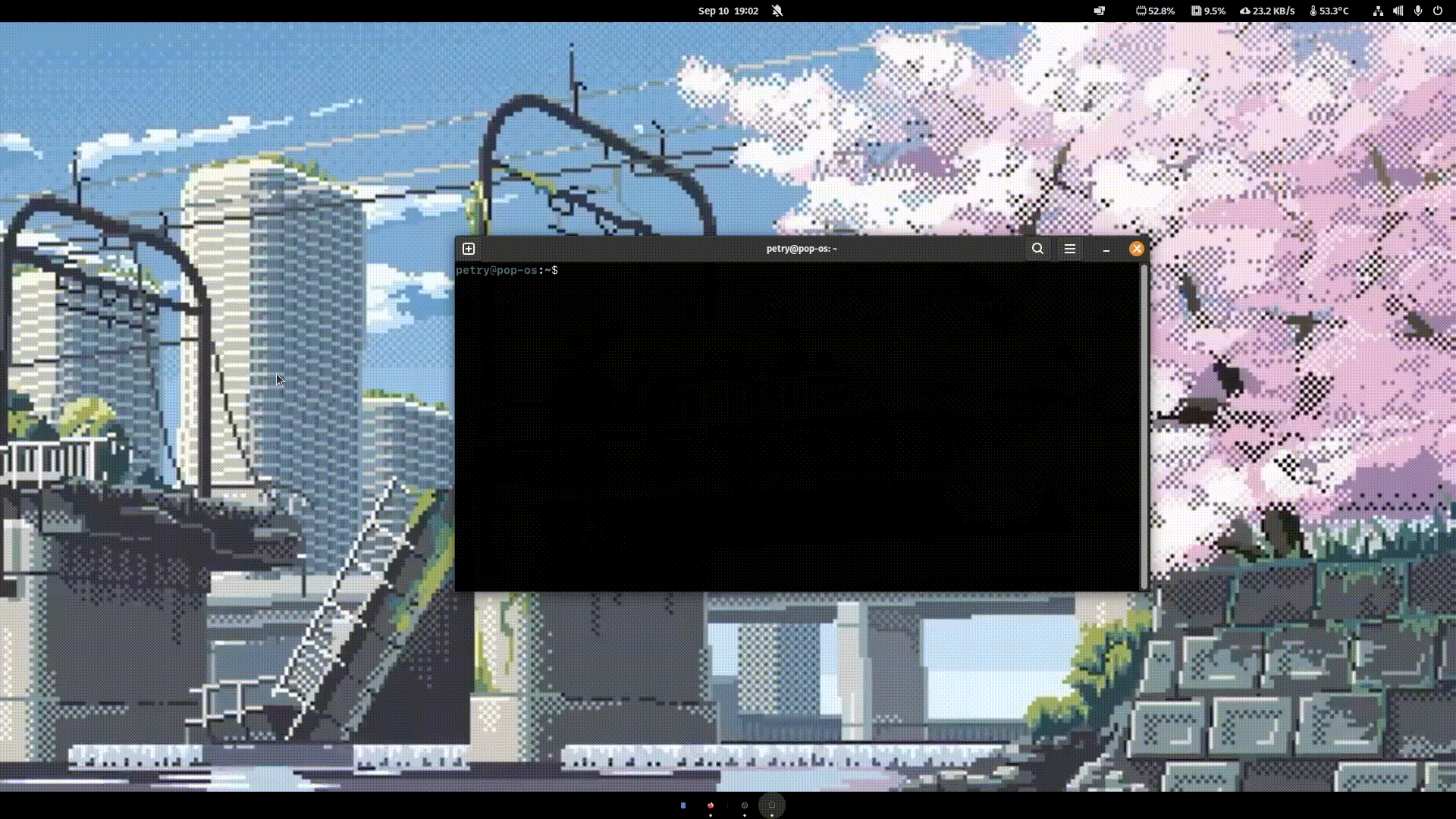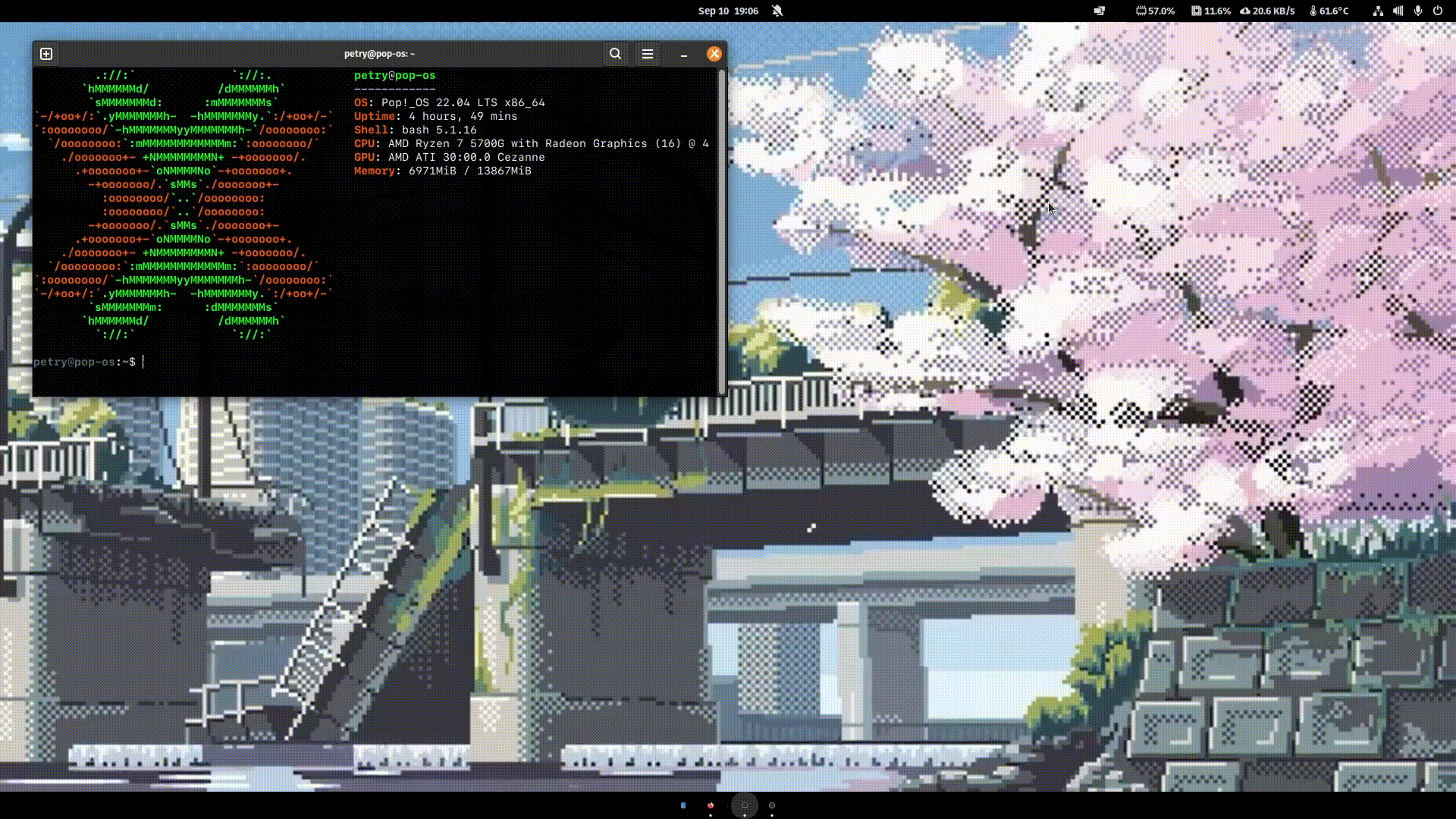Fun with Neofetch and Bash scripts
Neofetch is one piece of customization I really miss when I am at different computers other than my main one. When executed, it provides a nice Linux ASCII art with context information about the machine. You can customize the style and information it returns.

Really nice, huh? Well, yes...
Every time you run the neofetch command, you can customize the output with some arguments, like the--ascii_distro <DISTRO> that changes the Linux ASCII logo it will print, or the --cpu off that will hide the CPU information, and many others.
This standard implementation is limited and even pointless for the everyday experience. It is not even funny and today we are here to have fun, REAL FUN, with terminal applications, right :queijo:?
"Would that be really nice if neofetch runs as the first command when a new terminal window is opened, and with a different Linux ASCII art?", I thought when I first discovered this software.
And with the power of bash scripts, yes, we can run customized neofetch with a simple ./neofetch.sh call, and automate it to run as the first command of a new terminal window:

Neofetch was discontinued on Apr 26, 2024, but you can still use it, as it is just a simple tweak.
How to make Neofetch funny bash scripts
To reproduce my implementation of the neofetch, follow the steps:
- Download and install Neofetch.
- Find the Bash configuration file
.bashrc. Path:$HOME/.bashrc. - Paste this script in the bottom of the file:
fetchers=( "AIX" "Alpine" "Anarchy" "Android" "Antergos" "antiX" "AOSC OS" "AOSC OS/Retro" "Apricity" "ArcoLinux" "ARCHlabs" "ArchStrike" "XFerience" "ArchMerge" "Arch" "Artix" "Arya" "Bedrock" "Bitrig" "BlackArch" "BLAG" "BlankOn" "BlueLight" "bonsai" "BSD" "BunsenLabs" "Calculate" "Carbs" "CentOS" "Chakra" "ChaletOS" "Chapeau" "Chrom*" "Cleanjaro" "ClearOS" "Clear_Linux" "Clover" "Condres" "Container_Linux" "CRUX" "Cucumber" "Debian" "Deepin" "DesaOS" "Devuan" "DracOS" "DarkOs" "DragonFly" "Drauger" "Elementary" "EndeavourOS" "Endless" "EuroLinux" "Exherbo" "Fedora" "Feren" "FreeBSD" "FreeMiNT" "Frugalware" "Funtoo" "GalliumOS" "Garuda" "Gentoo" "Pentoo" "gNewSense" "GNOME" "GNU" "GoboLinux" "Grombyang" "Guix" "Haiku" "Huayra" "Hyperbola" "janus" "Kali" "KaOS" "KDE_neon" "Kibojoe" "Kogaion" "Korora" "KSLinux" "Kubuntu" "LEDE" "LFS" "Linux_Lite" "LMDE" "Lubuntu" "Lunar" "macos" "Mageia" "MagpieOS" "Mandriva" "Manjaro" "Maui" "Mer" "Minix" "LinuxMint" "MX_Linux" "Namib" "Neptune" "NetBSD" "Netrunner" "Nitrux" "NixOS" "Nurunner" "NuTyX" "OBRevenge" "OpenBSD" "openEuler" "OpenIndiana" "openmamba" "OpenMandriva" "OpenStage" "OpenWrt" "osmc" "Oracle" "OS Elbrus" "PacBSD" "Parabola" "Pardus" "Parrot" "Parsix" "TrueOS" "PCLinuxOS" "Peppermint" "popos" "Porteus" "PostMarketOS" "Proxmox" "Puppy" "PureOS" "Qubes" "Radix" "Raspbian" "Reborn_OS" "Redstar" "Redcore" "Redhat" "Refracted_Devuan" "Regata" "Rosa" "sabotage" "Sabayon" "Sailfish" "SalentOS" "Scientific" "Septor" "SereneLinux" "SharkLinux" "Siduction" "Slackware" "SliTaz" "SmartOS" "Solus" "Source_Mage" "Sparky" "Star" "SteamOS" "SunOS" "openSUSE_Leap" "openSUSE_Tumbleweed" "openSUSE" "SwagArch" "Tails" "Trisquel" "Ubuntu-Budgie" "Ubuntu-GNOME" "Ubuntu-MATE" "Ubuntu-Studio" "Ubuntu" "Venom" "Void" "Obarun" "windows10" "Windows7" "Xubuntu" "Zorin" "and" "IRIX" "Arch_old" "Ubuntu_old" "Redhat_old" "Dragonfly_old" )
randomIndex=$((RANDOM % ${#fetchers[@]}))
neofetch --ascii_distro "${fetchers[randomIndex]}"
The fetchers scope contains all the Linux ASCII arts Neofetch comes with. The randomIndex will select one element of the fetchers array and send it to the command structure, creating an authentic Neofetch command. Example: neofetch --ascii_distro "kali".
- Save and run a new terminal window.
- Take some screenshots and send it to me 😄
This looks like cyber magic to me.
